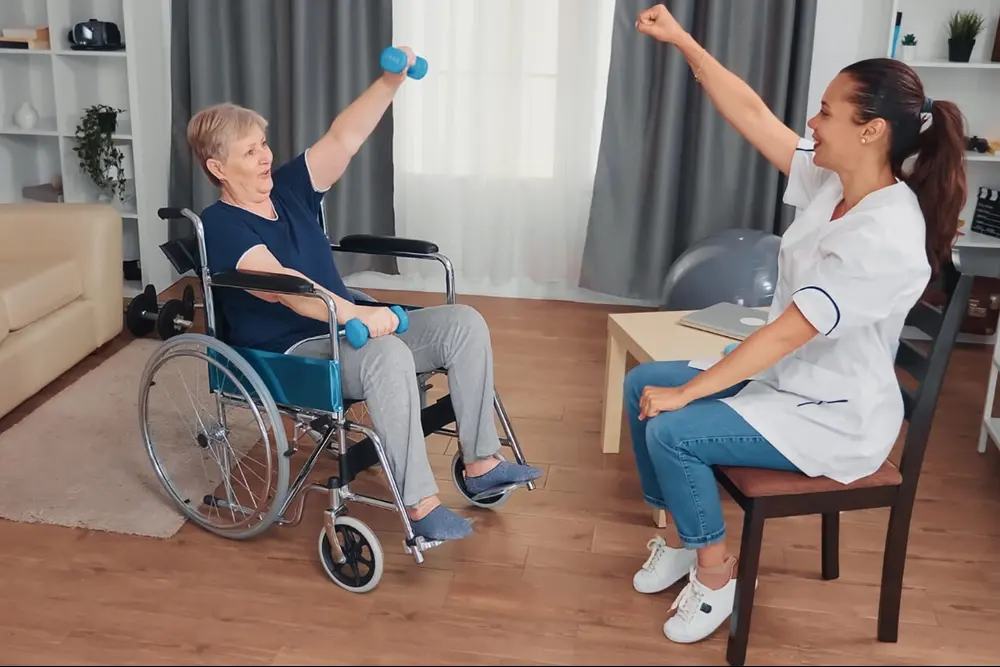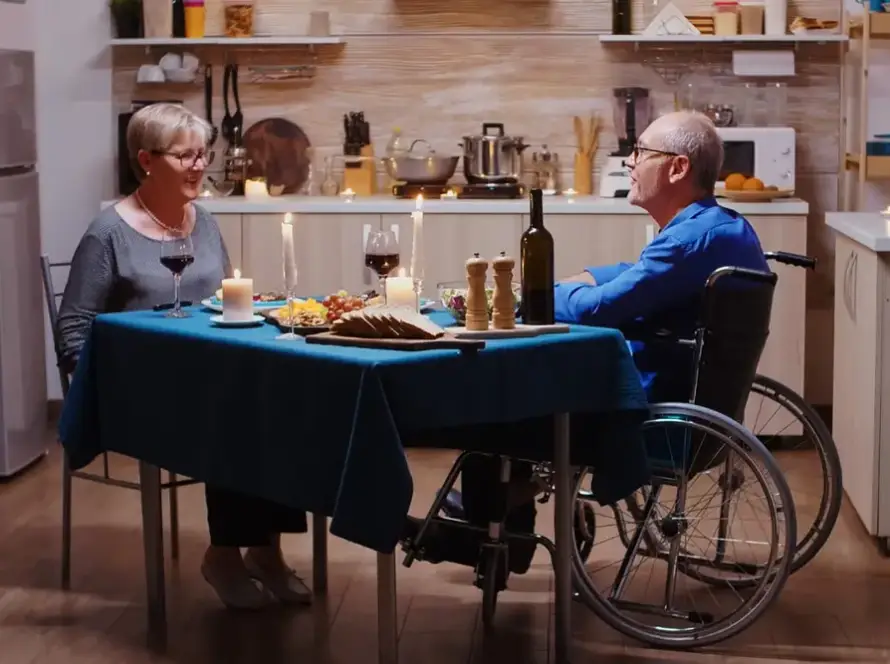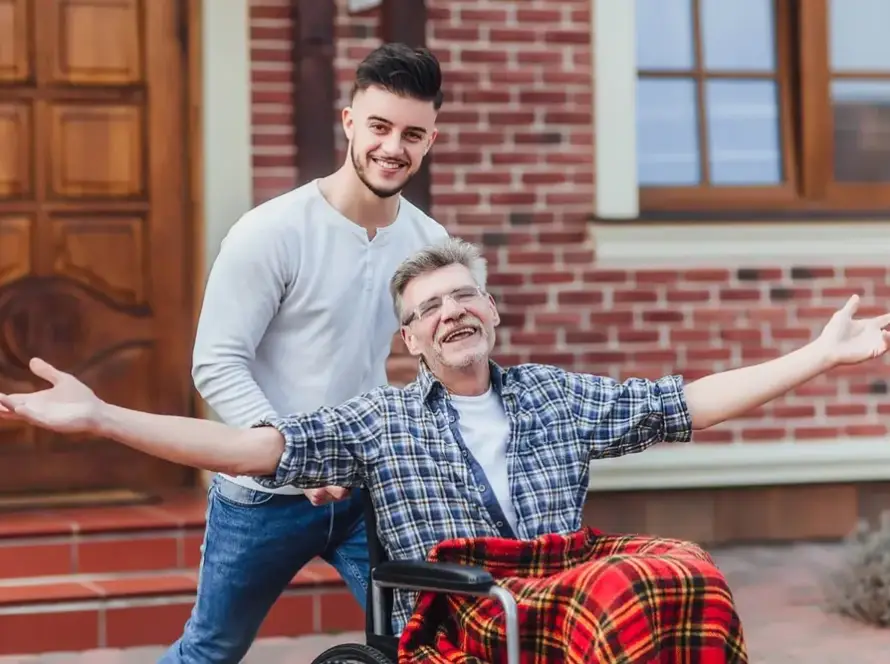Tribune News Service
What a delight it was to wake up the other day and find that another nasty attempt by Republicans to take away people’s health care had failed.I’m talking about the implosion of the Better Care Reconciliation Act, Senate Republicans’ latest effort to repeal and replace the Affordable Care Act. The proposal, which the AARP estimated would have slashed Medicaid spending between $2 trillion to $3.8 trillion over the next 20 years, was a callous assault on the independence of people with disabilities – like me.
It was even more gratifying to know that one of the main reasons this cruel proposal crashed and burned was that people with disabilities fought back. Video of disabled protesters from the group ADAPT being dragged out of the hallway in front of Senate Majority Leader Mitch McConnell’s office went viral. Other ADAPT protesters occupied the office of Sen. Cory Gardner, R-Colo., for more than 50 hours before they were arrested and removed.
I took part in two other ADAPT protests. On June 26, I joined disabled people from Indiana in an occupation of the office of their Republican senator, Todd Young. We demanded he publicly vow to vote against the bill. Federal marshals removed us from the office and building, carrying some and pushing or driving the wheelchairs of others. There were no arrests.
Two days later, I joined disabled people from Wisconsin in an action targeting their Republican senator, Ron Johnson. Again, as we chanted in the atrium of the federal building and U.S. courthouse in Milwaukee, we were removed but not arrested.
The Senate Republicans’ bill, like one passed earlier by the House, would have placed harsh limits on the amount of Medicaid funding the federal government would annually give to each state. Right now, state and federal governments split the cost of providing Medicaid services, whatever it may be.
The idea of capping Medicaid scares me to death. I use a motorized wheelchair and employ a crew of people to assist me with daily tasks like dressing, bathing and getting out of bed. Their wages are paid by a Medicaid-funded state program. Without this assistance, I would be stuck in a nursing home.
An analysis of the bill by the Community Living Policy Center concluded that if its proposed limits on Medicaid spending had been implemented in 2005, spending on community support programs like the one that serves me would have been reduced by between $72 billion to $98 billion in just the first nine years.
After the election last November, it was hard to not succumb to despair. But since then I have found hope in the idea that collective protest action can turn the tide against the GOP’s agenda. That’s exactly what happened. Thousands of people around the country have stood up for Medicaid and affordable health care. And, so far, it’s working.
But Republican leaders are so obsessed with destroying Medicaid they will try again and again. The fiscal year 2018 budget resolution just released by the House Budget Committee calls for caps on Medicaid.
So the fight is far from over. But now, at least we know we can win.
Mike Ervin, a writer and disability rights activist living in Chicago, writes the blog Smart Ass Cripple at smartasscripple.blogspot.com. He wrote this for Progressive Media Project, a source of liberal commentary on domestic and international issues; it is affiliated with The Progressive magazine. Distributed by Tribune Content Agency, LLC.
Reference from: http://www.vindy.com/news/2017/jul/26/disabled-will-fight-for-health-care/?newswatch
President George W. Bush created the New Freedom Initiative, a program promoting full participation of people with disabilities by increasing access to technologies, education and employment opportunities.
The Obama Administration, which I proudly served, hired more than 100,000 people with disabilities into the federal government, supported disability employment with the Workforce Innovation and Opportunity Act and revised Section 503 of the Rehabilitation Act to set an aspirational seven percent hiring goal for qualified individuals with disabilities for federal contractors. He also signed the Achieving a Better Life Experience (ABLE) Act, creating tax-advantaged savings accounts for people with disabilities.
And then there is the Affordable Care Act (ACA), known as ObamaCare, which ensures protection of millions of Americans with disabilities under Medicaid and prevented exclusions of pre-existing conditions that had previously prevented individuals with disabilities from obtaining coverage.
So President Trump has a strong legacy of bipartisan action on this issue to live up to. The 59 million Americans living with a disability are watching very closely to see what his administration does.
President Trump said the GOP healthcare plan would “be every bit as good on pre-existing conditions as Obamacare.” During his campaign, President Trump expressed his support for Medicaid, including tweeting “The Republicans who want to cut SS & Medicaid are wrong.” But the GOP proposals have not met the President’s own assurances.
The latest Senate bill would’ve allowed insurers to offer skimpier plans that exclude pre-existing conditions, which was required under the ACA, as well as allow states to opt out of requirements for coverage for essential health benefits – a back door for insurers to offer plans that wouldn’t cover people with pre-existing conditions. This would leave Americans like me living with a disability vulnerable to vanishing coverage and skyrocketing costs.
The GOP bill also included substantial cuts to Medicaid, seemingly disregarding that nearly two-thirds of Medicaid spending goes to supporting people with disabilities and the elderly. With the current proposal lacking support, the President and Republicans in Congress should seek other ways to improve Medicaid rather than cut it.
For instance, Senator Schumer’s Disability Integration Act (DIA) would prevent states and insurance providers from denying community-based services so individuals can remain at home and live independently, as opposed to being forced into an assisted living institution. Medicaid is the primary supporter of these services, and in-home care has shown to be more cost-effective and could generate savings over time.
Beyond amending their current approach to healthcare reform to include disabled Americans, the Trump administration can also take steps to protect and strengthen the ADA.
This administration can help us ensure progress continues toward accessibility for disabled Americans to things like voting, government and corporate websites, and public transportation. These areas are essential functions that allow citizens to actively engage, work and fully participate in society.
Education is another critical area the Trump administration could support inclusion. The Supreme Court backed disabled student rights under IDEA with a unanimous decision earlier this year. But support also needs to come from the White House and the Department of Education. The Administration is currently supporting a “school choice” voucher program that negatively impacts many students with disabilities because it requires parents to waive their child’s educational rights, removing federal protections provided under IDEA.
Regardless of whether the 35 million eligible Americans with disabilities voted for Trump or against him, the President represents us all and his agenda impacts our lives. As we near the 27th ADA anniversary, I look for him to affirm his support of a bipartisan Inclusion Revolution and build on the work of his successors to keep progress moving forward.
I truly hope President Trump’s administration takes heed to President George. W. Bush’s words when he launched the New Freedom Initiative. “Wherever any barrier stands between you and the full rights and dignity of citizenship, we must work to remove it, in the name of simple decency and simple justice.”
Janni Lehrer-Stein is a disability rights advocate, policy expert and former appointee to the National Council on Disability under President Obama and senior policy advisor to the Hillary for America campaign. She was blinded by retinal degenerative disease. Follow her on Twitter @JLSAdvocate.






